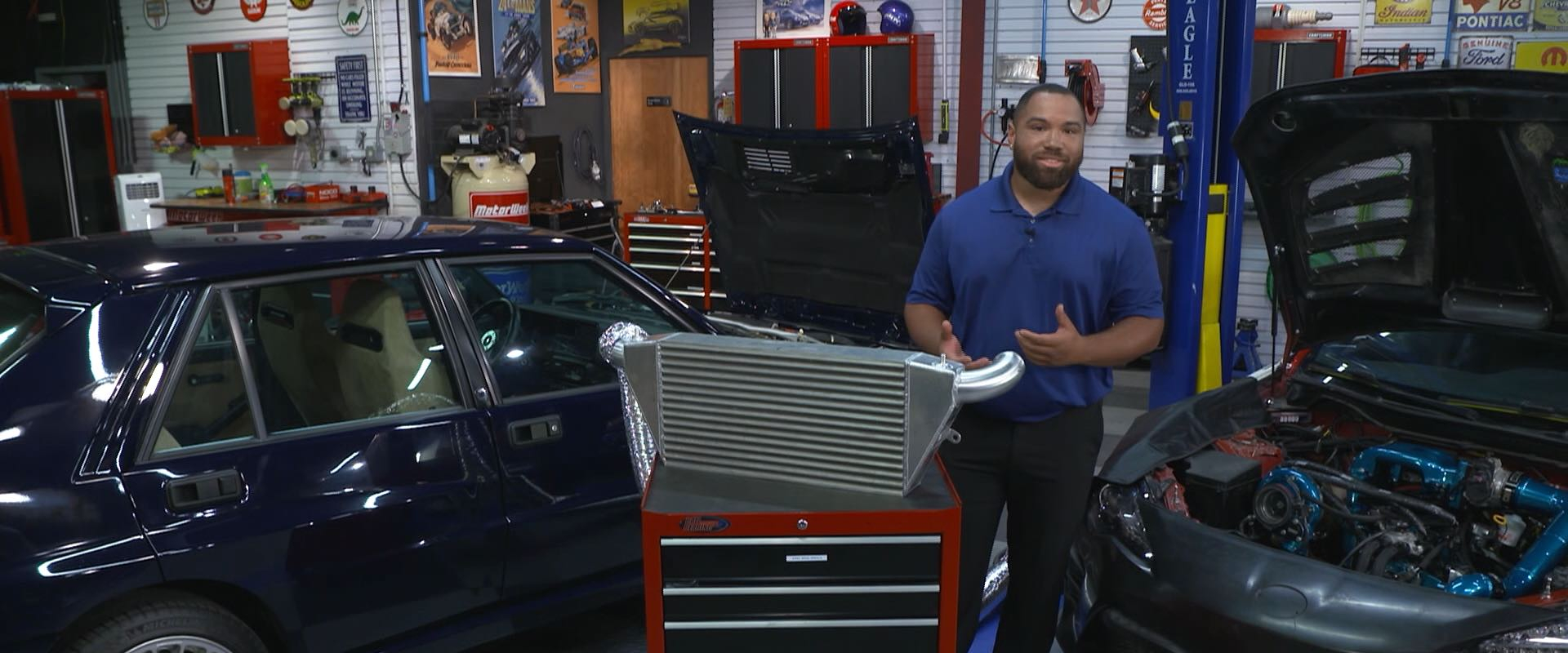Intercooler Basics
More power usually means more heat, which is why intercoolers are such an important part of any turbo or supercharged setup. Logan McCombs is here to boost our knowledge of boosted cooling on MotorWeek’s “Your Drive.”
LOGAN MCCOMBS: Having a turbocharger or supercharger on your car can be fun. They provide you with extra power without having your engine work as hard, and they do make great noises! However, they will get hot as your engine gets to operating temperature and especially when you start to push it. This will cause the air that’s being pulled in to be warm. That’s why having an intercooler is a crucial piece to make sure you get the best performance out of your engine.

Now, intercoolers aren’t new technology, but, while the engineering has evolved from the systems on this ’94 Lancia, they all fundamentally work the same. An intercooler is a cooling device that’s fitted between the pathway of the turbocharger and the intake of the engine. This is all connected by an air plumbing system. Hot air pulled in by the turbocharger, travels down to the intercooler via piping. The air then goes through a small set of tubes that run the entire length of the intercooler, thus cooling it down. Here’s a look at that airflow using a fog machine.
On the outside, you see these visible fins that allow air to pass over the metal pipes inside the intercooler while you’re driving, cooling these pipes and allowing for the air inside to become dense and up to 20 to 30 degrees cooler. Optimal airflow depends on the intercooler’s mounting location, usually in the front behind the bumper or grille, but they can also be on top of the engine where it is getting air from a hood scoop.
Now you may be wondering, “doesn’t my radiator already do that?” While this is true, a radiator and an intercooler do completely different tasks. A radiator is used to cool your coolant while it flows through your hot engine to help maintain optimum temperatures and to not let it overheat. The intercooler cools the compressed air that is pulled in by your turbocharger and fed into your engine. Cooler air is denser, making for a more efficient, and reliable, and happier engine.
If you have any questions or comments, reach out to us right here at MotorWeek.








